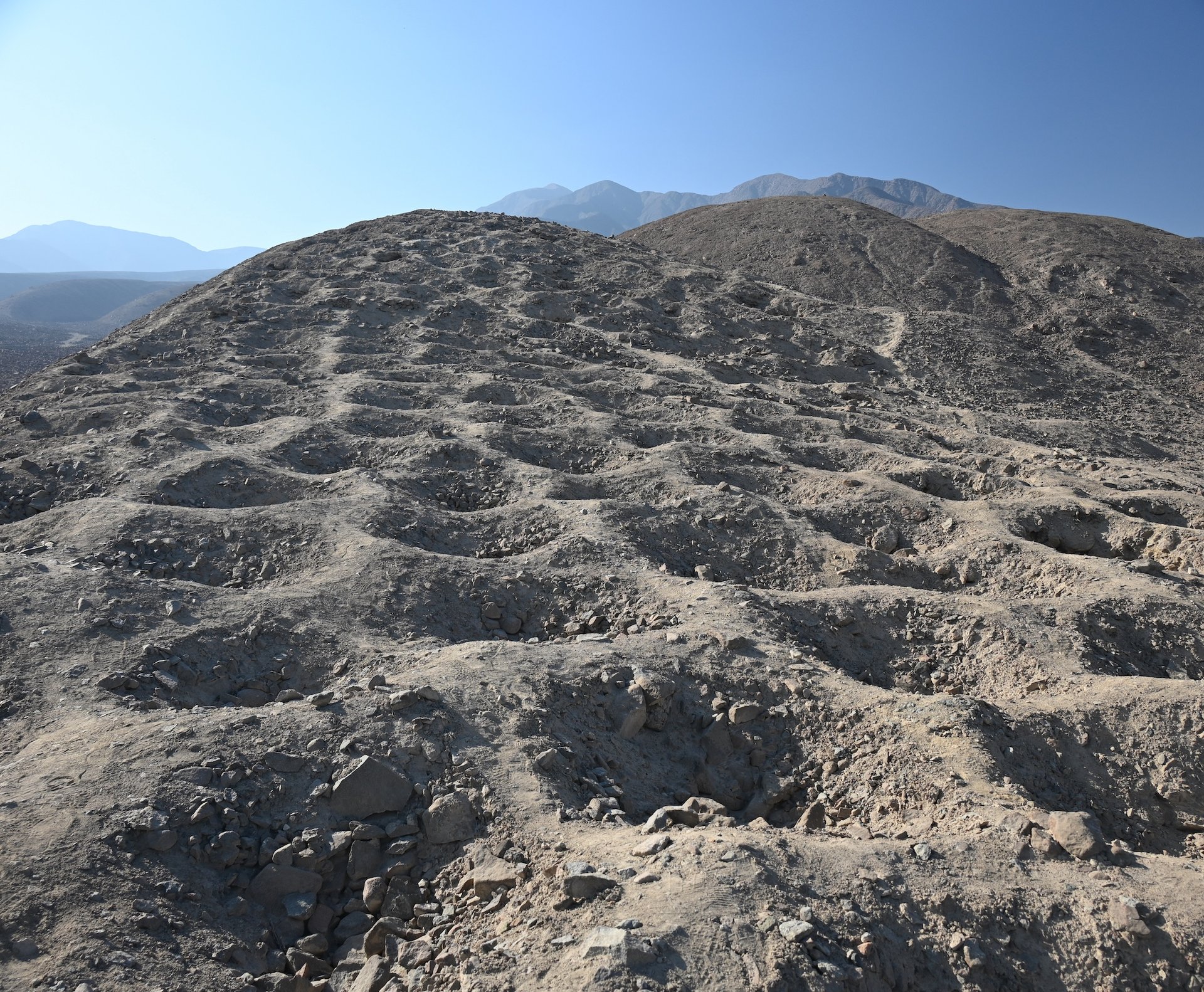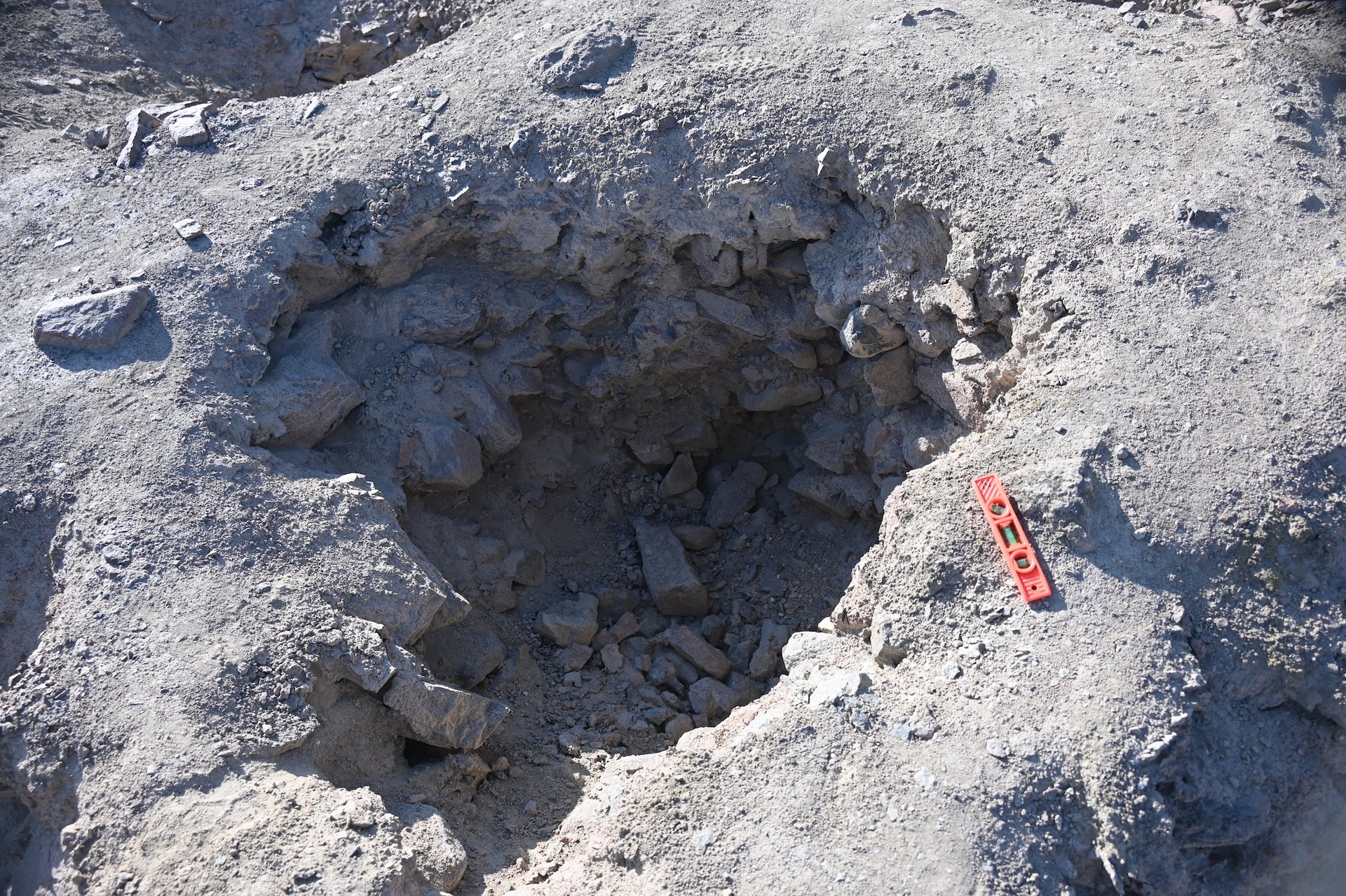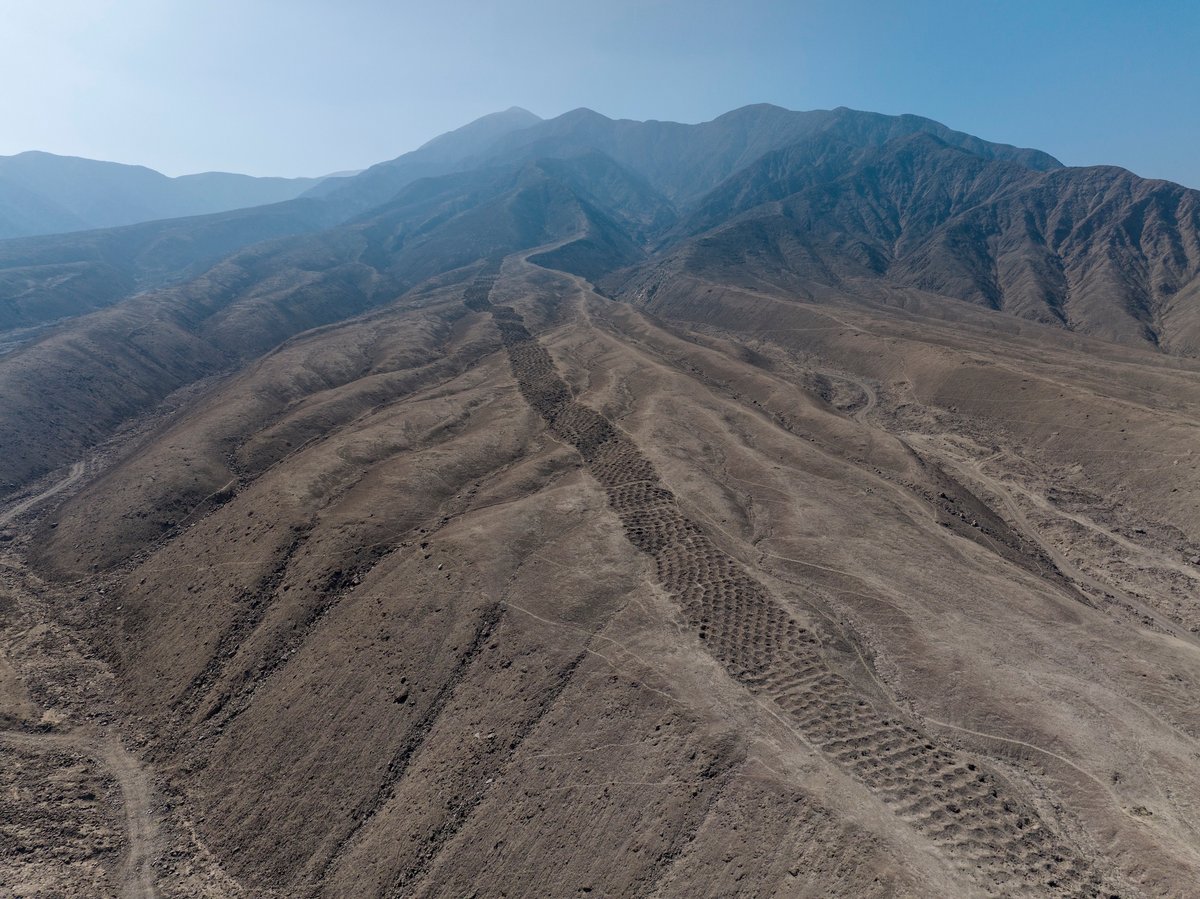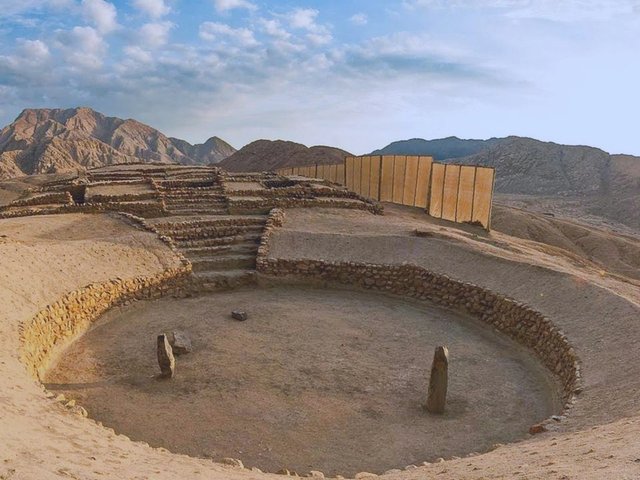A mysterious “band of holes” in the Peruvian Andes may once have been a bustling marketplace. According to experts, ancient people used this unique monument, which consists of thousands of precisely aligned holes at Monte Sierpe, 220km south-east of Lima, as a place of trade, exchange and accounting. Its design may also mirror khipus, ancient Andean knotted-string record-keeping devices.
“Our findings are unexpected and carry implications for better understanding accounting, exchange and resource management within and beyond the Andes,” Jacob Bongers, lead author of the research paper and an archaeologist at the University of Sydney in Australia, tells The Art Newspaper.
Stretching for 1.5km along a ridge of Peru’s Pisco Valley, and 14m to 22m wide, the site consists of around 5,200 aligned holes, each up to 2m in diameter and up to 1m in depth. Along the band, the holes are organised into around 60 sections separated by empty spaces. These sections can differ in their number of holes—one section has nine rows of eight holes, for example, while another has six rows of seven holes with a final row of eight.

A group of holes at Monte Sierpe Photo by C. Stanish. © The Authors, 2025. Research published by Cambridge University Press on behalf of Antiquity Publications Ltd
This unique monument was probably built by the Chincha Kingdom between AD1000 and AD1400, and continued in use under the Inca Empire from 1400 until 1532. It first rose to fame in 1933, when The National Geographic Society published aerial photographs of the site. Since then, experts have proposed numerous theories for how ancient Peruvians might have used the band of holes: from defence, storage, accounting and water collection, to fog capture, gardening, mining and as a burial ground.
Bongers and his colleagues have used a drone to produce high-resolution imagery of the site and collected sediment samples from 19 of the holes. Microbotanical analysis of the samples revealed the presence of plant remains, among them maize and wild plants, traditionally used for making baskets. Radiocarbon dating gave a year range of between 1320 and 1405, in line with other nearby sites, but the drone imagery provided surprises.
“Examining the imagery revealed intriguing numerical patterns in layout,” Bongers says.
The team realised that the “segmented” organisation of the band of holes mirrors the structure of a unique Inca khipu discovered in the Pisco Valley, the same valley as the ancient monument. Significantly, ancient Andeans used khipus as record-keeping devices: a khipu’s series of knotted pendant cords, each hanging from one main cord, could be read by those literate in the system.

A close-up at Monte Sierpe; scale is 20cm Photo by C. Stanish. © The Authors, 2025. Research published by Cambridge University Press on behalf of Antiquity Publications Ltd
“The khipu [from the Pisco Valley] has 80 distinct groups of pendant cords that are of similar size. From this perspective, the 80 groups of pendant cords are analogous to the roughly 60 segments of holes that we identified at the site,” Bongers says. “The arithmetic relationships between the numbers knotted on the cords of the khipu may provide a window into the accounting operations that were carried out at Monte Sierpe. In a sense, Monte Sierpe appears to have been a ‘landscape khipu’. This idea remains tentative.”
Based on the current evidence, published in the journal Antiquity, Bongers and his colleagues hypothesise that before the Inca, the band of holes was a bustling barter marketplace where people from the coastal and highland areas came to meet and exchange goods. They arrived with crops such as maize in reed baskets or bundles, and placed them in the holes, which may have been lined with plant materials.
After the arrival of the Inca, around 1400, the monument likely became an accounting device for tribute collection. Each section of holes may have been linked to a particular social group and used for paying taxes and redistributing commodities.
“Overall, this study contributes an important Andean case study on how past communities modified past landscapes to bring people together and promote interaction,” Bongers says. “Our findings expand our understanding of barter marketplaces and raise fresh questions about the origins and diversity of Indigenous accounting practices within and beyond the ancient Andes.”






